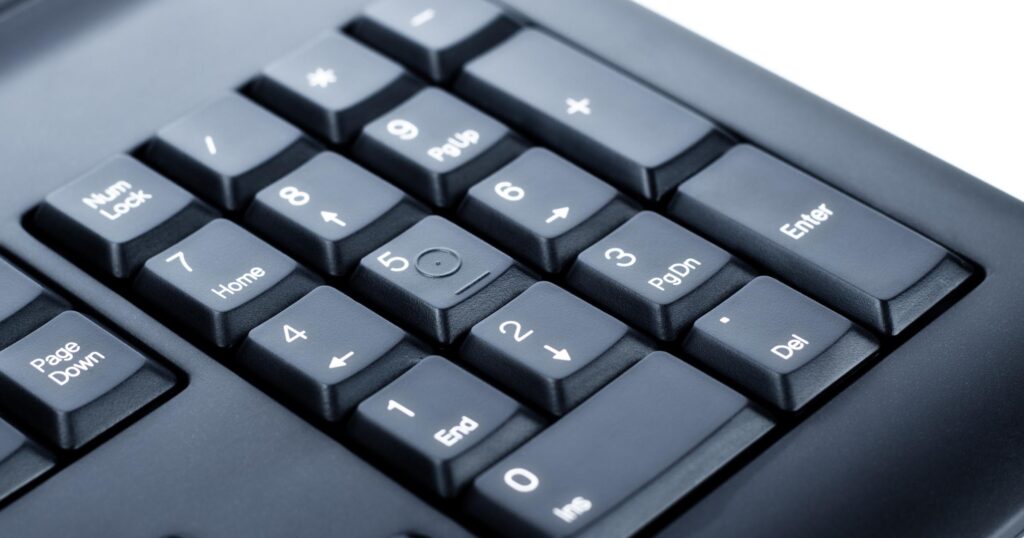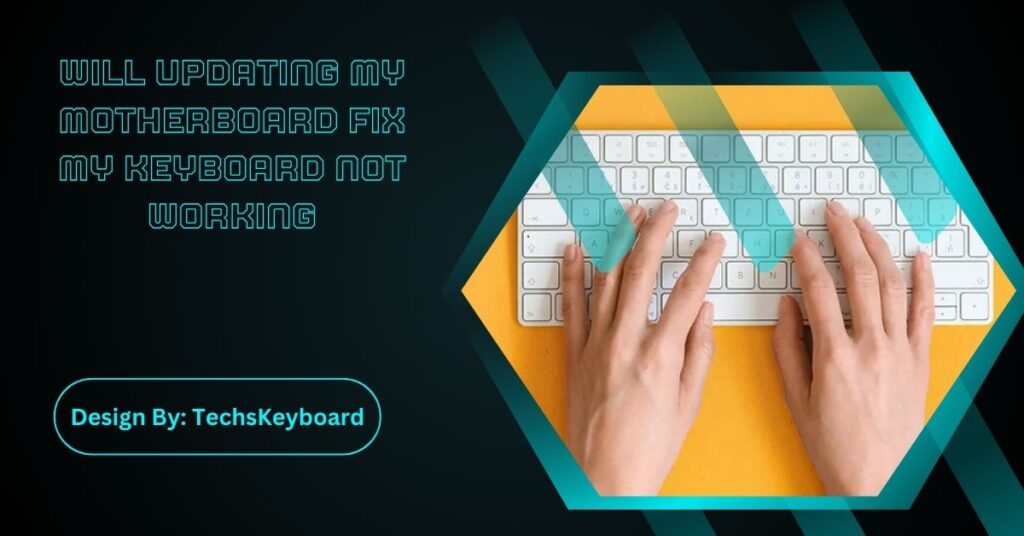Updating your motherboard might fix keyboard issues if the problem is due to outdated BIOS or USB drivers. However, other causes like faulty ports, drivers, or the keyboard itself could also be responsible.
If your keyboard suddenly stops working, it can be frustrating and confusing. One of the potential fixes you may have heard about is updating your motherboard. But will updating your motherboard actually fix your keyboard problem?
In this article, we’ll explain how your motherboard works with your keyboard, when an update might help, and other simple steps you can take to fix the issue.
What Role Does the Motherboard Play in Keyboard Functionality?
The motherboard is like the brain of your computer, connecting all the parts, including your keyboard. It controls how the keyboard communicates with your computer through USB ports, drivers, and settings. If there’s a problem with the motherboard or the drivers, your keyboard might stop working properly.
But before rushing to update your motherboard, it’s important to understand that there are many reasons your keyboard might not be working, and the motherboard is just one possible cause.
Can Updating the Motherboard Fix Your Keyboard Problem?

Updating your motherboard might help if the problem is caused by outdated software or hardware settings. Here are some cases where a motherboard update could solve the issue:
Outdated BIOS or Firmware
The BIOS is a small program on the motherboard that helps control how your computer starts up and communicates with devices like your keyboard. If your BIOS is outdated, it might not recognize newer keyboards or hardware. Updating the BIOS could fix this.
USB Port Problems
Your motherboard controls the USB ports where you plug in your keyboard. If the ports aren’t working correctly due to outdated drivers, updating the motherboard can install new drivers that may fix the issue.
Compatibility Issues
Sometimes, newer keyboards have trouble working with older motherboards. A motherboard update can add support for new hardware, making your keyboard work again.
How to Update Your Motherboard?
Updating your motherboard (or specifically, updating its BIOS) can be a good step if you think it’s the problem. Here’s a simple guide to help you update your motherboard safely:
Check Your Current BIOS Version:
- Restart your computer and press a key like F2 or Delete when it starts up (this key depends on your computer brand).
- In the BIOS menu, find the version number of your BIOS.
Download the Latest BIOS:
- Go to your motherboard manufacturer’s website and search for your specific motherboard model.
- Download the latest BIOS update for your model, making sure it’s the correct one.
Update the BIOS:
- Follow the instructions on the manufacturer’s website to update the BIOS.
- Some motherboards allow you to update the BIOS directly from the BIOS menu, while others may require you to use a USB drive.
Important Note: Be careful when updating your BIOS. If something goes wrong, it can cause more serious problems with your computer. Always follow the instructions carefully.
Also Read: Is Red Dead Redeption 2 Betterr On Keyboard Or Controller – Complete Guide!
Will Updating the Motherboard Always Fix Keyboard Problems?
While updating the motherboard can sometimes fix keyboard issues, it’s not always the answer. There are other reasons why your keyboard might not be working. Here are some common causes:
Other Reasons Why Your Keyboard Might Not Be Working?
- Driver Issues: Sometimes, your keyboard drivers (the software that helps the computer communicate with the keyboard) can become outdated or corrupted. Updating or reinstalling the keyboard drivers may fix the issue.
- USB Port Problems: Your USB port might be faulty. Try plugging your keyboard into a different USB port to see if that helps. You can also try switching between USB 2.0 and USB 3.0 ports.
- Faulty Keyboard: The problem might not be your computer at all—it could be the keyboard itself. Try testing your keyboard on another computer to check if it’s working.
- Windows Glitches: Sometimes, operating system errors can cause the keyboard to stop responding. Restarting your computer or updating Windows can often resolve this.
Other Troubleshooting Methods to Try:

If updating your motherboard doesn’t solve the problem, here are some other things you can try:
- Check BIOS Settings: Go into your BIOS settings and make sure that USB ports or keyboard settings haven’t been disabled by mistake.
- Test in Safe Mode: Boot your computer in Safe Mode to see if the keyboard works there. If it works in Safe Mode, the issue might be with your regular Windows setup.
- Use On-Screen Keyboard: Windows has a built-in On-Screen Keyboard that can serve as a temporary solution if your physical keyboard isn’t working. You can find it in Settings > Ease of Access > Keyboard.
When to Replace Your Keyboard or Motherboard?
If none of these solutions fix the problem, you may need to consider replacing your keyboard. If the keyboard works fine on another computer but not on yours, the issue could lie with your motherboard, and it may need replacing or repair.
Tips to Prevent Future Keyboard Issues
- Keep Drivers Updated: Make sure your BIOS and keyboard drivers are updated regularly to avoid compatibility issues.
- Keep Your Keyboard Clean: Dust and debris can affect your keyboard’s performance. Cleaning it regularly can help avoid problems.
- Use Good Quality Hardware: Invest in quality keyboards and motherboards to reduce the chances of hardware failure.
FAQs:
1. Can a BIOS update fix my keyboard not working?
Yes, a BIOS update can fix keyboard issues if the problem is due to outdated firmware that doesn’t support the keyboard. Always ensure you follow update instructions carefully.
2. Will updating my motherboard fix USB port problems affecting my keyboard?
Updating your motherboard can help resolve USB port issues by installing new drivers, which may allow your keyboard to work properly again.
3. Can a faulty motherboard cause keyboard issues?
Yes, a faulty motherboard or its drivers can cause keyboard malfunctions. However, always rule out simpler issues like driver problems or USB port failure first.
4. Is it safe to update my motherboard to fix keyboard issues?
Yes, but updating the motherboard or BIOS requires care. Follow the manufacturer’s instructions closely to avoid complications, as incorrect updates can cause more severe computer issues.
5. What if updating the motherboard doesn’t fix my keyboard problem?
If the update doesn’t work, check for driver issues, faulty ports, or a defective keyboard. Testing the keyboard on another device helps determine if it’s the issue.
Conclusion:
Updating your motherboard can sometimes resolve keyboard issues, especially when caused by outdated BIOS or USB drivers. However, it’s not always the definitive solution. Other factors like faulty ports, corrupt drivers, or defective keyboards could be responsible. If the update doesn’t work, try additional troubleshooting steps such as reinstalling drivers or testing the keyboard on another computer. Keeping your hardware updated and well-maintained will prevent future problems.


